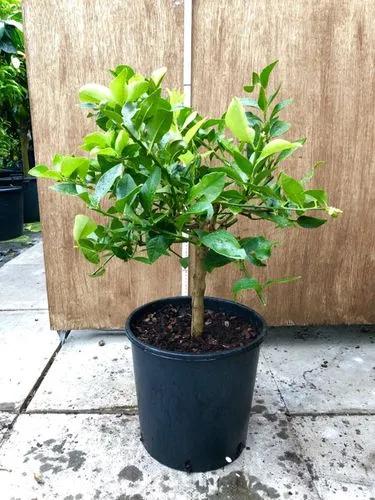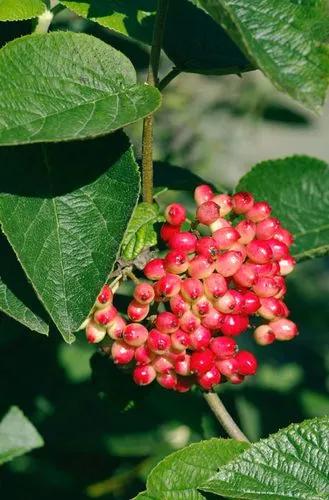It is an evergreen tree growing to a height of 12–20 m. The leaves are alternate, 10–30 cm long, pinnate, with three to 11 leaflets, each leaflet 5–15 cm wide and 3–10 cm broad, with an entire margin. The flowers are small, 2.5–5 mm, apetalous, discoidal and borne in erect terminal panicles 15–30 cm wide. Rambutan trees can be male (producing only staminate flowers and, hence, produce no fruit), female (producing flowers that are only functionally female) or hermaphroditic (producing flowers that are female with a small percentage of male flowers). The fruit is a round to oval single-seeded drupe, 3–6 cm (rarely to 8 cm) long and 3–4 cm broad, borne in a loose pendant cluster of 10–20 together. The leathery skin is reddish (rarely orange or yellow) and covered with fleshy pliable spines, hence the name, which means 'hairs'. The spines (also known as "spinterns") contribute to the transpiration of the fruit, which can affect the fruit's quality. The fruit flesh, the aril, is translucent, whitish or very pale pink, with a sweet, mildly acidic flavor reminiscent of grapes. The single seed is glossy brown, 1–1.3 cm, with a white basal scar. Soft and containing equal portions of saturated and unsaturated fats, the seeds may be cooked and eaten. The peeled fruits can be eaten raw or cooked and eaten: first, the grape-like fleshy aril, then the nutty seed, with no waste.
Rambutan Care
Nephelium Lappaceum



How to Care for the Plant

Water

Water regularly throughout the growing season, especially if conditions are dry. Small regular waterings are preferred over deep long soaks.

Pruning

Once the tree is established, minimum pruning is required. Trim lightly to help maintain shape and remove dead or decaying branches and any suckers (growth below the graft union).

Fertilizer

Fertilize with a food that is 55g potash, 115g phosphate, and 60g urea at six months and again at one year of age. At two years old, fertilize with a food that is 165g potash, 345g phosphate, and 180g urea. At the third year, apply 275g potash, 575g phosphate, and 300g urea every six months.

Soil

In heavy clay soils, it’s best to put extra effort into soil preparation. To check if your soil needs work, dig a hole and pour a bucket of water into the hole – if it takes more than 30 minutes to disappear, then you will need to improve your drainage.

Temperature

Keep the tree damp and humidity at 75 to 80 percent in a temperature at around 80 degrees F. (26 C.) in partial sun for 13 hours a day.

Container

Choose a pot at least 500mm wide.

Popularity

113 people already have this plant 24 people have added this plant to their wishlists
Discover more plants with the list below
Popular articles






